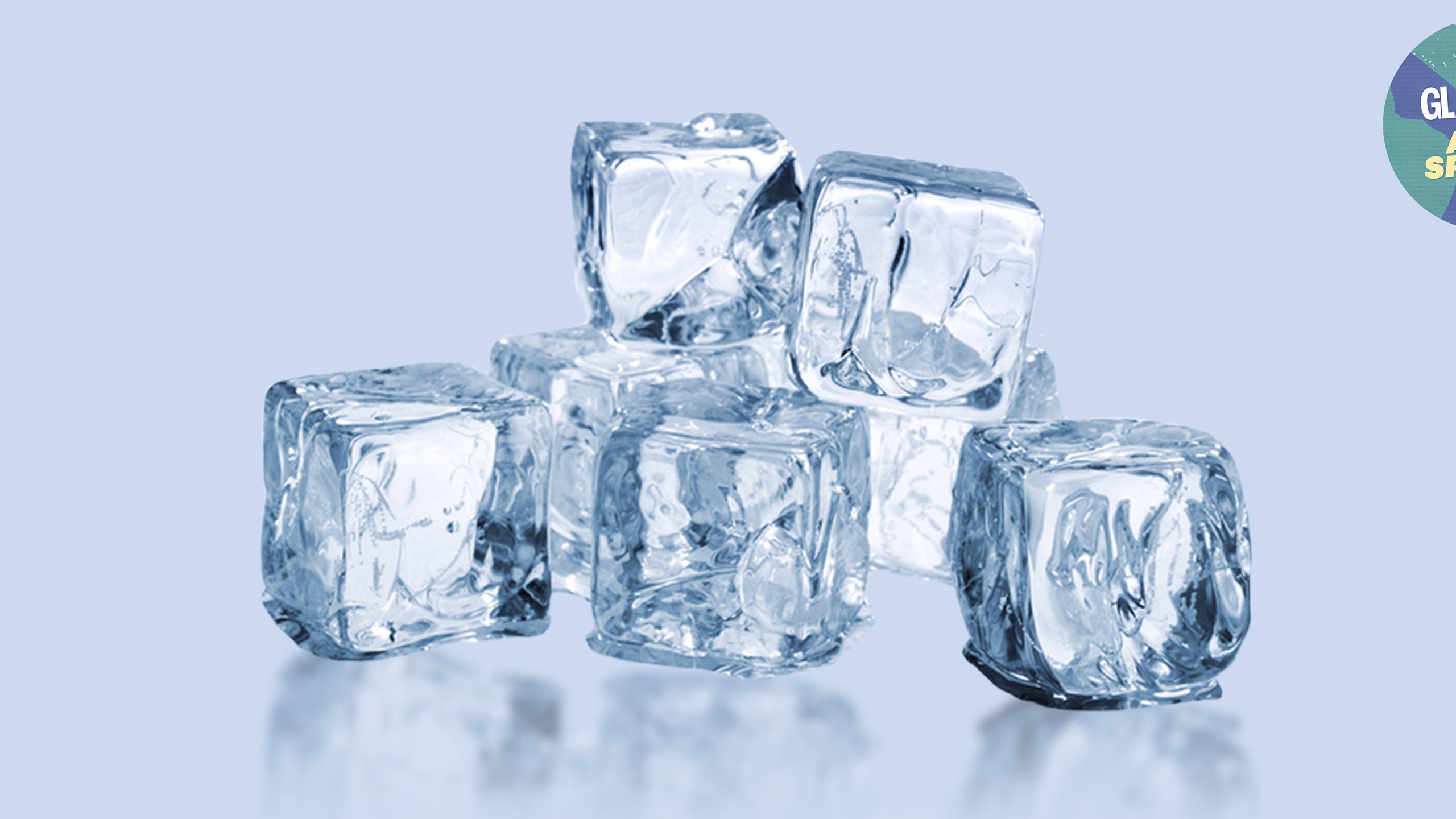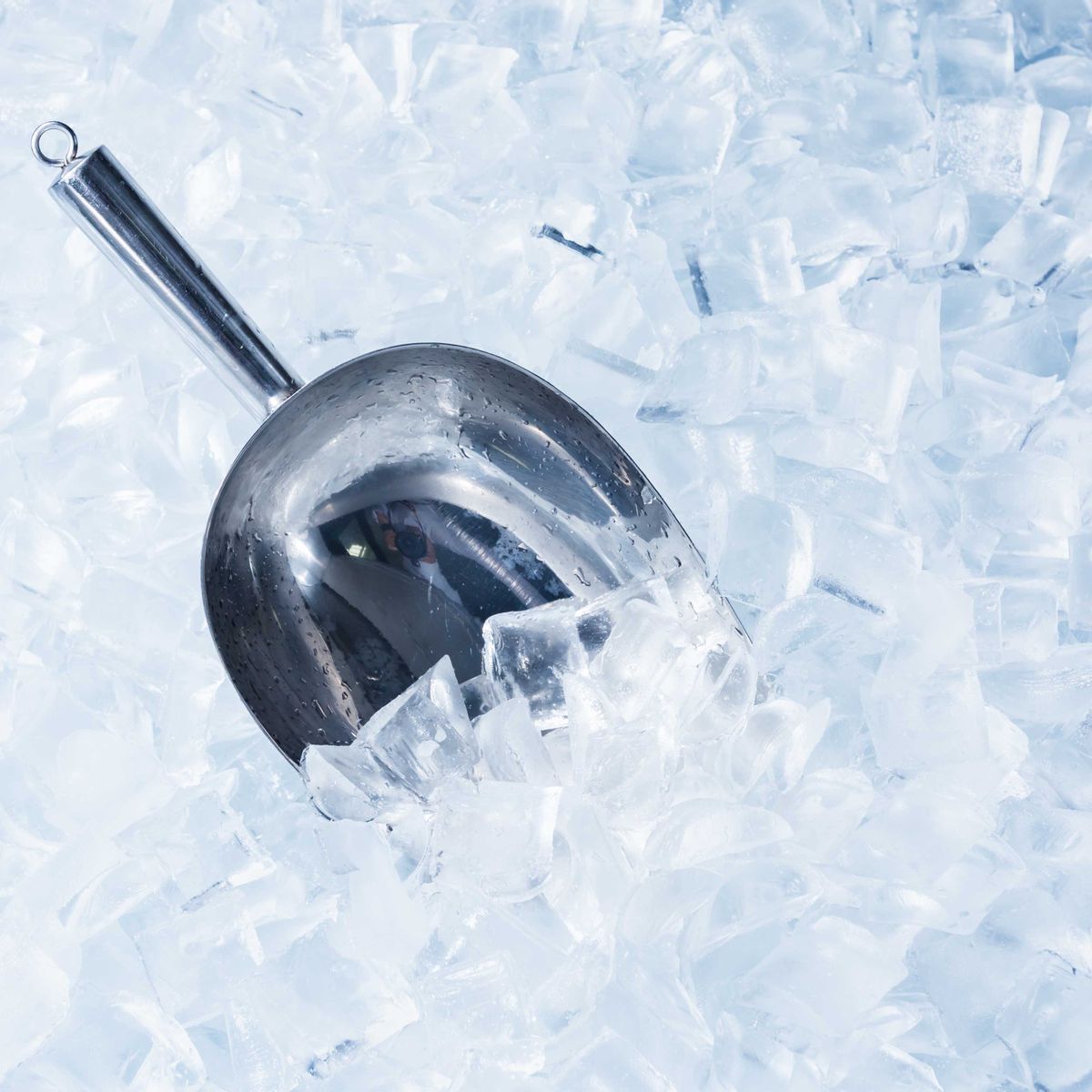Can the Ice Hack Help You Lose Belly Fat?

If you have been on TikTok lately, you might have come across videos that claim to reveal a secret weight loss method. Known as the “ice hack diet” or “alpine ice diet,” this craze has taken social media by storm, with millions of views and followers. It involves consuming a glass of ice mixed with a mysterious white powder, which supposedly melts away belly fat without any exercise or strict diets. But is this too good to be true? In this article, we will explore the science behind the ice hack diet and whether it can indeed help you lose belly fat.
What Is the Ice Hack Diet (aka Alpine Ice Diet)?

People clicking links for the ice hack diet in hopes of discovering some kind of secret about the cubes in their water glass are bound to be disappointed. The truth is, there is no such thing as an ice hack diet or alpine ice diet. These terms were coined by social media influencers to attract attention and gain followers. The actual “hack” they promote is nothing more than consuming ice and a white powder, which they claim can aid weight loss by increasing metabolism and burning calories. However, there is no scientific evidence to support these claims, and health experts warn against following this fad.
The Claims Behind the Ice Hack Diet
The ice hack diet revolves around the idea of cold thermogenesis, which means using cold temperatures to boost metabolism and burn fat. Proponents of this theory suggest that exposing the body to cold temperatures can trigger the release of brown adipose tissue (BAT), which is a type of fat that burns calories instead of storing them. They believe that consuming ice can lower the body’s temperature, forcing it to burn more calories to maintain its core temperature. Additionally, the white powder that they recommend often contains caffeine, which is known to have a thermogenic effect, meaning it can increase metabolism and promote fat burning.
While these claims might sound convincing, there is little scientific evidence to support them. In fact, the idea of cold thermogenesis as a weight loss method is controversial among researchers, and more studies are needed to confirm its effectiveness.
The Risks of Following the Ice Hack Diet
One of the biggest risks of following the ice hack diet is the potential for harm to your health. Consuming large amounts of ice or exposing your body to extremely cold temperatures can lead to hypothermia, which is a dangerous condition that occurs when the body loses heat faster than it can produce it. Symptoms of hypothermia include shivering, confusion, slurred speech, and even death in severe cases.
Moreover, the white powder that some influencers recommend may contain harmful ingredients such as ephedrine, which has been banned in dietary supplements due to its links with heart attacks and strokes. Caffeine, another common ingredient in these powders, can also cause adverse effects such as insomnia, jitteriness, and increased heart rate.
Can the Alpine Ice Hack Can Help With Weight Loss?

After learning about the dangers and lack of scientific evidence behind the ice hack diet, it’s safe to say that this fad is not a reliable or healthy weight loss method. However, the concept of using cold temperatures to boost metabolism and burn fat does have some merit, according to research.
Brown Adipose Tissue (BAT) and Weight Loss
Brown adipose tissue (BAT), also known as brown fat, is a type of adipose tissue that burns calories instead of storing them. Unlike white fat, which accumulates in the belly and other areas of the body, brown fat is found in small amounts in the neck, upper back, and chest. When activated, BAT can generate heat by burning glucose and fatty acids, thus increasing metabolic rate and promoting weight loss.
Recent studies have shown that exposure to cold temperatures can activate BAT in humans, leading to increased energy expenditure and fat burning. For example, a study published in the Journal of Clinical Investigation found that people who spent two hours per day in a room cooled to 17°C (62.6°F) for six weeks experienced a significant increase in energy expenditure and BAT activity. This suggests that incorporating cold exposure into your daily routine, such as taking cold showers or spending time outside in the winter, could aid weight loss by activating BAT.
Cold Exposure and Calorie Burn
In addition to activating BAT, cold exposure may also help burn more calories by increasing metabolic rate. When your body is exposed to cold temperatures, it has to work harder to maintain its core temperature, which requires more energy expenditure. A study published in the Journal of Applied Physiology found that people who spent two hours in a cold room (14°C or 57.2°F) burned an extra 200-300 calories compared to those who spent the same amount of time in a neutral (24°C or 75.2°F) environment. While this might not sound like a significant amount, over time, these extra calories cancontribute to weight loss and maintenance.
However, it’s important to note that these benefits are only seen with moderate levels of cold exposure. Exposing yourself to extremely cold temperatures or for prolonged periods can be dangerous and harmful to your health. Therefore, incorporating small amounts of cold exposure into your routine, such as taking a cold shower or wearing lighter clothes in the winter, may be a more effective and safe way to reap the benefits of cold thermogenesis.
What Does Research Tell Us About Body Temperature and Weight?
While the idea of using cold temperatures to lose weight is relatively new, research on the relationship between body temperature and weight has been conducted for decades. Here’s what we know so far:
Metabolic Rate and Body Temperature
Metabolic rate refers to the number of calories your body burns at rest to carry out essential functions such as breathing, circulating blood, and maintaining body temperature. Generally, people with higher metabolic rates burn more calories, even while resting.
Research has shown that body temperature can influence metabolic rate and weight loss. For example, a study published in the Journal of Clinical Endocrinology Metabolism found that people with lower body temperatures had slower metabolic rates and were more susceptible to weight gain than those with higher body temperatures. Additionally, a review of studies published in Obesity Reviews found that exposing the body to cold temperatures can increase metabolic rate and lead to weight loss.
Brown Adipose Tissue and Body Temperature
As mentioned earlier, brown adipose tissue (BAT) plays a crucial role in regulating body temperature and energy expenditure. BAT is activated by cold temperatures and can increase metabolic rate by burning fat and glucose. Studies have shown that people with higher levels of BAT activity tend to have lower body mass indexes (BMIs) and better glucose tolerance.
Moreover, researchers have identified a protein called irisin, which is released by muscles during exercise and can activate BAT. A study published in the journal Cell Metabolism found that mice injected with irisin had increased BAT activity and energy expenditure, leading to weight loss. While more research is needed to determine the effects of irisin on humans, this protein may hold promise as a potential weight loss aid.
Is the Alpine Ice Hack Diet Safe?
Given the lack of scientific evidence and potential risks associated with the ice hack diet, it is not recommended as a safe or effective weight loss method. Consuming large amounts of ice or exposing your body to extremely cold temperatures can lead to hypothermia, which is a dangerous condition that requires medical attention.
Moreover, the white powder that some influencers recommend often contains harmful ingredients such as ephedrine, which has been linked to heart attacks and strokes. Caffeine, another common ingredient, can also cause adverse effects such as insomnia, jitteriness, and increased heart rate.
If you are looking to lose belly fat and improve your health, it’s essential to focus on sustainable lifestyle changes such as regular exercise, healthy eating habits, and stress management. Incorporating small amounts of cold exposure into your routine, such as taking cold showers or spending time outside in the winter, may provide additional benefits without the risks associated with extreme cold exposure.
Bottom Line: Should You Try the Ice Hack Diet?
In summary, the ice hack diet or alpine ice diet is a fad that lacks scientific evidence and poses potential risks to your health. While the concept of cold thermogenesis has some merit, incorporating small amounts of cold exposure into your routine may be a safer and more effective way to promote weight loss and improve overall health.
If you are looking for sustainable weight loss, it’s essential to focus on healthy lifestyle habits such as regular exercise, healthy eating, and stress management. Consulting with a registered dietitian or healthcare provider can provide personalized recommendations and support on your weight loss journey.
Video
Conclusion
The ice hack diet or alpine ice diet may have gained popularity on social media, but it’s important to separate fact from fiction when it comes to weight loss. While cold thermogenesis has some potential benefits, extreme cold exposure and consuming unknown powders can be harmful to your health.
Incorporating small amounts of cold exposure into your routine, such as taking cold showers or spending time outside in the winter, may provide additional benefits without the risks associated with extreme cold exposure. Ultimately, sustainable weight loss and improved health require a holistic approach that prioritizes healthy lifestyle habits and seeks support from qualified healthcare professionals.
















